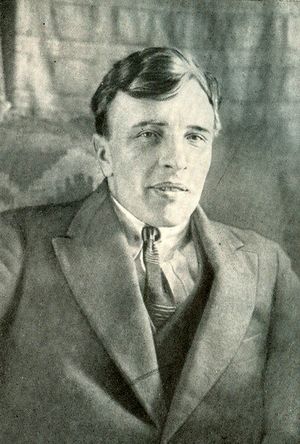Bonch-Osmalovsky Gleb Anatolievich
03 November 1890, Blon Estate, Igumensk Uezd, Minsk Governorate — 01 November 1943, Kazan
Biography, education, career:
Gleb Bonch-Osmalovsky was born to the family of populist revolutionaries Anatoly Osipovich (1857 — 1930) and Varvara Ivanovna (1855 — 1929) Bonch-Osmolovsky, who founded in their estate a peasant organization and conducted educational activities. In 1909 Bonch-Osmalovsky visited Ossetia; in 1910—1912 he conducted ethnographic material on Khevsurians in the Caucasus for the Department of Ethnography of the Russian Museum of His Imperial Majesty Alexander III (now – the Russian Museum of Ethnography). In 1918 1919 he was engaged in underground clandestine activities in Crimea, where he participated in ethnographic expeditions in early 1920-s, collecting materials on the rituals of Tatars in Sudak and Bakhchisarai regions. In 1920 1921 he was appointed Head of the Crimean Committee for Mueums that was responsible for the process of nationalization and inventory of art items. From 1922 he began to work at the Department of Ethnography of the Russian Museum, where, in 1924, he became chief associate curator of the Russian Museum responsible for the Department of Ethnography. In 1924 – 1925, in Kiik-Koba Grotto, 25 km east of Simferopol, he discovered bone remains of Neanderthal man (the first archaeological find of the kind on the territory of the former USSR). From 1930 to 1933 he was senior researcher at the State Academy of the History of Material Culture, senior researcher and Head of the Quaternary Department of the Geological Institute of the USSR Academy of Sciences. In November 1933 he was arrested and sentenced to three years in forced labour camp. In 1936 he was released on parole. In 1936 1941 he worked on his monograph The Crimean Paleolithic under the publishing contract with the Publishing House of the Academy of Sciences and the Institute of Anthropology of the First Moscow State University. In February 1941, after the first volume of the monograph Kiik-Koba Grotto had been published, he had the record of his conviction expunged. He then works as a senior researcher at the Institute of History and Material Culture of the USSR Academy of Sciences and a free-lance academic at Leningrad University. The second volume of the monograph, devoted to the find in Kiik-Koba, was sent to the printer in March 1941. After the Great Patriotic War broke out, Bonch-Osmolovsky was conferred the degree of Doctor of Sciences without dissertation defense. In November 1941, together with a group of researchers of the Institute of History and Material Culture of the USSR Academy of Sciences, he was evacuated to Kazan, where, from 1942, he worked at the Institute of Physiology of the USSR Academy of Sciences, taught at Kazan State University, and kept writing the third volume of his monograph that was to be published only in 1954. His tombstone at Arsk Cemetery in Kazan is a monument of Federal importance.
Areas of expertise: Physical anthropology; Anthropogenesis; Ethnic museology; History and ethnography of Turkic peoples; ethnography and material culture of Crimean Tatars


